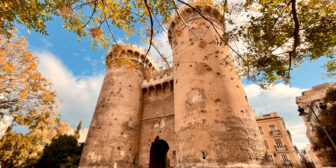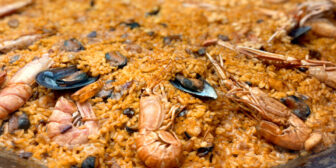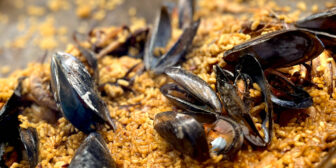Paella is a staple of Spanish cuisine but despite its popularity, there are many misconceptions about it. These interesting paella facts cover pretty much everything you need to know. Whether you are thinking of enjoying paella at a restaurant or trying your hand at making it yourself, be sure to read these hunger-inducing fun fact about paella first.
In This Article
1. Paella originated in Valencia
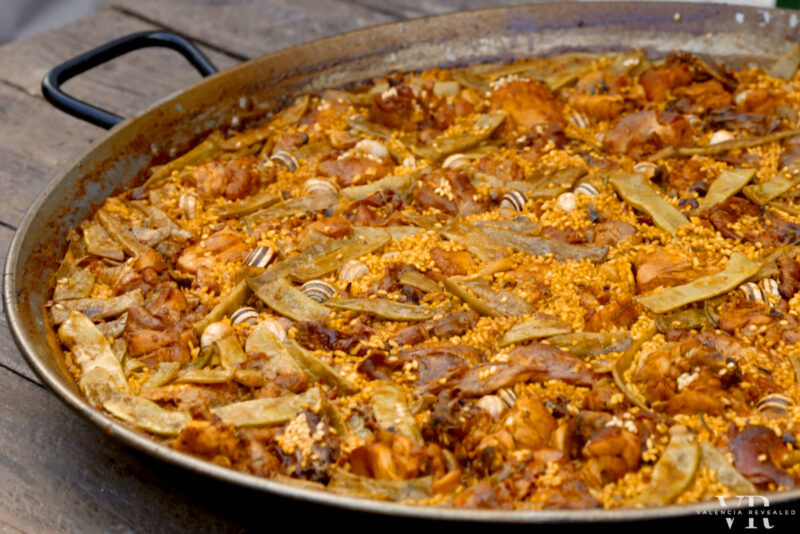
Paella was first cooked in the tiny fishing village of El Palmar, some 20 km south of Valencia. This village is located in the Albufera National Park and is surrounded by 220 km2 of rice fields. With a population of merely 750 people, El Palmar has 30+ restaurants and all of them prepare excellent paella. Albufera is one of the best day trips from Valencia and no visit is complete without a paella feast.
2. Paella has been cooked in Valencia for over two centuries
Nobody knows exactly when the first paella was cooked. What we do know is that the first mention of paella appeared in a newspaper back in 1843. Therefore, it’s likely that paella was born long before that, at the beginning of the 19th century or even earlier. Some even say that the origins of paella date back to the 16th century.
3. An authentic paella Valenciana admits little variations
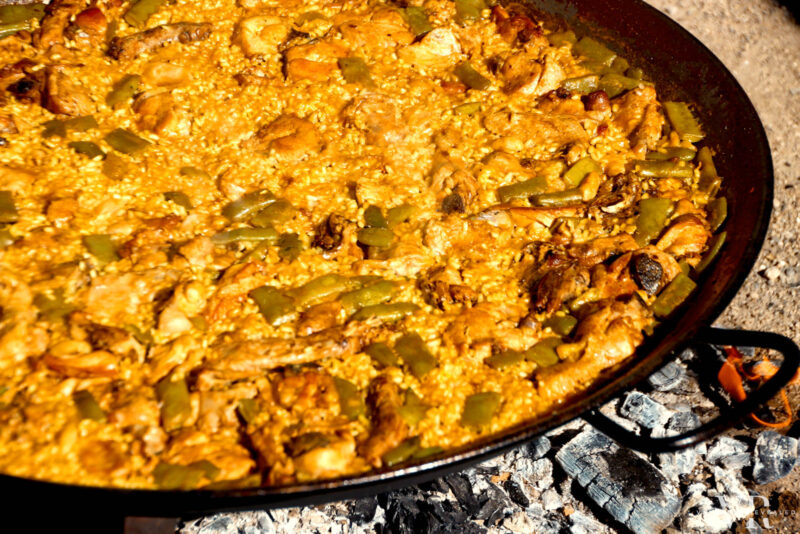
An authentic paella Valenciana is made with bomba rice, chicken, rabbit, green beans, garrofón beans, tomatoes, saffron, olive oil, salt, and water. Some cooks also add snails and decorate it with rosemary branches and lemon wedges. Paella Valenciana is the only paella that was granted protected status by the local government.
4. The first paella recipe had some unorthodox ingredients
The first paella recipe was published in 1857. An interesting fact is that it included some unorthodox ingredients, such as pork loin, sausage, garlic, red pepper, parsley, peas, or eel. Purists nowadays consider these ingredients a sacrilege.
5. Jamie Oliver’s paella recipe ruffled a few feathers
A few years ago, Jamie Oliver published a paella recipe with a twist. His recipe used ingredients such as chorizo, carrots, onions, garlic, peas, prawns, and parsley. While I’m sure Jamie’s creation is delicious, it’s a far cry from what is considered an authentic paella Valenciana. Valencianos everywhere felt offended and backlashed immediately on social media.
6. What is and isn’t paella is the subject of great debate
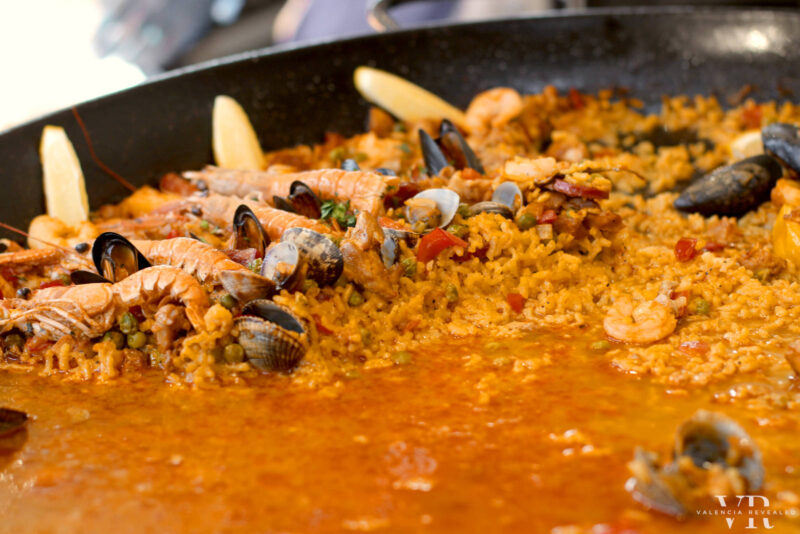
There are a few things Valencianos are more passionate about than paella. This dish is part of their local identity. Many Valencianos consider that paella has to be either paella Valenciana or it’s not paella at all. According to this line of though, seafood paella, paella mixta, or vegetable paella are simply rice dishes with stuff. I delve deeper into this fact in my post about “What is paella?“
7. You won’t have a problem finding seafood paella in Valencia
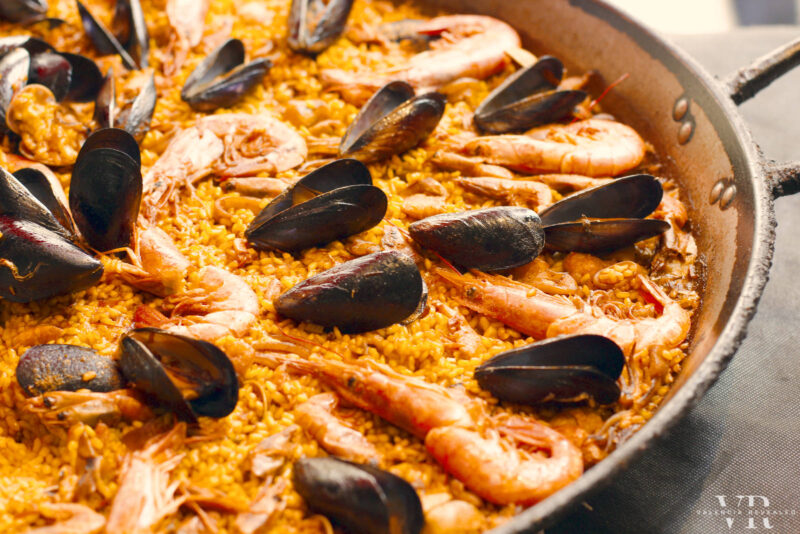
In spite of all the debate surrounding paella, a fun fact is that in Valencia, many restaurants still use the word paella for a variety of rice dishes. You won’t have to look hard to find seafood paella, lobster paella, prawn paella, or vegetable paella, especially in restaurants with English menus. This is meant to attract tourists. Often, the Spanish version of the menu uses the word “paella” way less.
8. Paella means pan
In Valenciano, the local co-official language, paella means a wide and shallow cooking pan with two short handles. The dish gets its name from the pan. Some people also use the term paellera for the pan. This is incorrect. Paellera is a special gas stove with several concentric rings used for cooking paella. It can also refer to the woman who is preparing the paella.
9. Paella is most often prepared by men
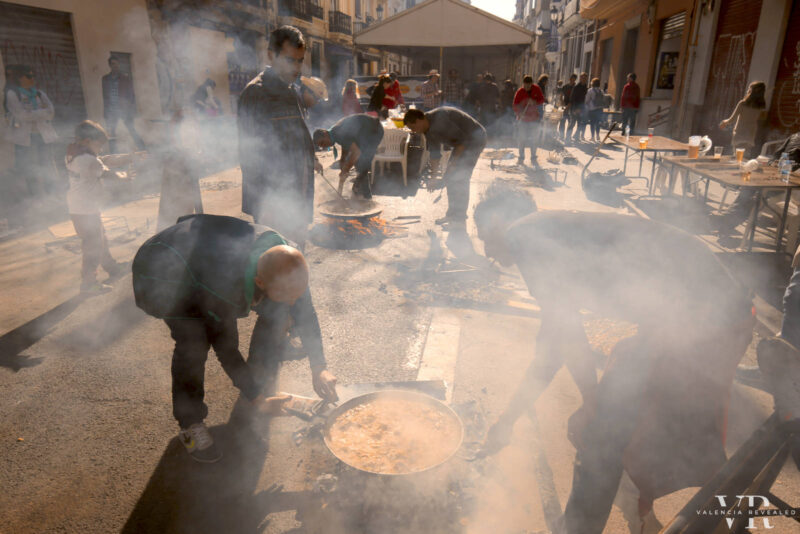
Nowadays, in Valencia, both men and women cook, especially among the younger generations. But traditionally, women used to do all the cooking. With one exception – paella. Similar to manning the grill, in Valencia, you’ll always see men gathered around the open fire over which paella is being cooked.
10. The best paella is cooked over an open fire
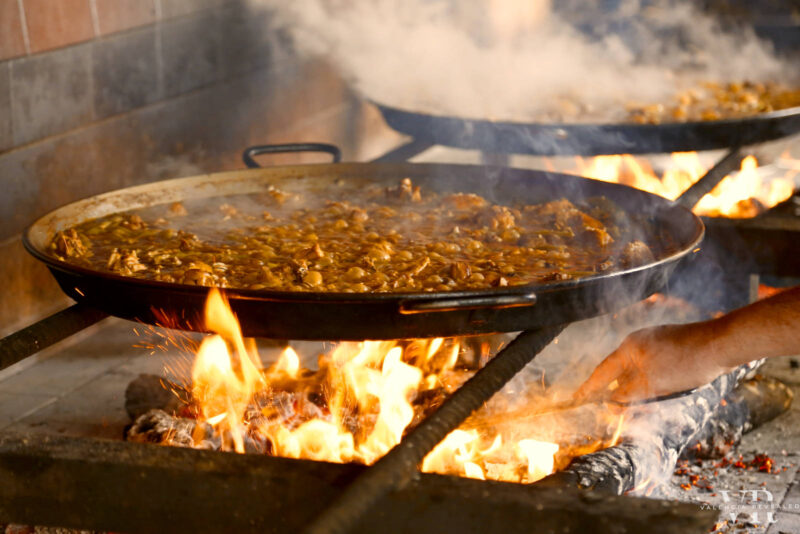
This leads us to the next interesting paella fact. The tastiest paellas are the ones cooked over an open fire, in a paellero (sort of a built-in barbecue). When cooked in the streets of Valencia during Las Fallas and other festivals, a wrought iron tripod is used to support the paella pan. To fuel the fire, the locals use orange branches, of which Valencia has no shortage.
11. Paella is a traditional Sunday lunch
To some extent, paella is the equivalent of the traditional Sunday roast in England. Every Sunday, families gather around a large paella pan and enjoy a leisurely lunch that lasts for hours. While paella is a staple dish served on special occasions it’s also present on restaurant menus any day of the week. However, Valencianos only eat paella for lunch, as it’s considered too heavy for dinner. Try to remember this fun fact next time you order paella.
12. Stirring in the paella is a big no-no
“Stirring now and again” is the worst advice you can get when learning to cook paella. In Valencia, stirring the paella is a sin, as it’s believed to disrupt the rice’s absorption of flavors. Also, by stirring, you’ll end up with a creamy risotto rather than paella.
13. Paella is best eaten directly from the pan
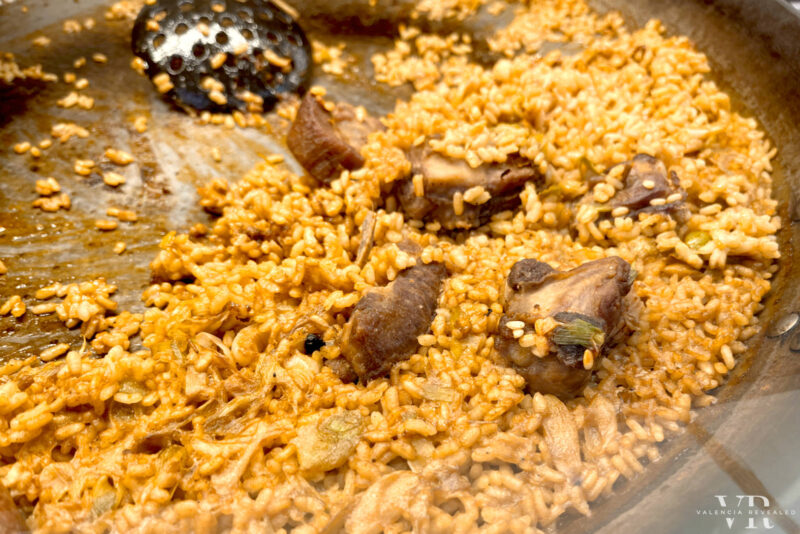
Traditionally, paella is presented and served in the very pan it was cooked in, placed in the center of the table. Nowadays, waiters will also offer you individual plates, but the traditional way of eating paella is directly from the pan. In many Valencian households, this practice still continues. For an authentic experience, use a spoon instead of a fork when eating. It tastes better.
14. The best part of paella is called socarrat
You may find the above fact about paella a bit confusing. Why would it matters whether you use a spoon or a fork? But there’s a perfectly logical explanation for it. By using a spoon to scrape the pan, you are able to savor all the layers of the paella, including the socarrat, which is the slightly caramelized bottom layer. “Socarrat” means “burnt” in Valenciano, and it’s the most flavorful part of the dish.
15. A good paella has a thin layer of rice
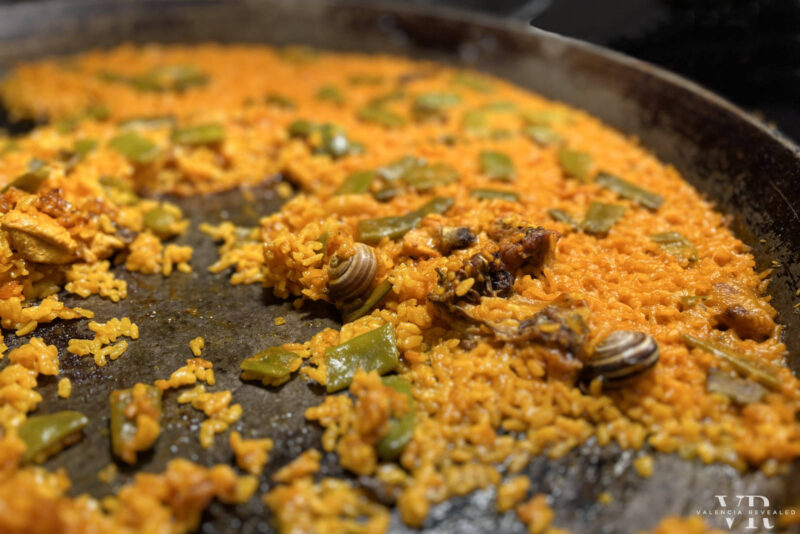
Paella pans are approximately 7 cm tall (2.75 inches). For an authentic paella, the rice should be cooked in a thin layer, with a depth no greater than 2 cm (0.8 inches). This is because paella is at its best when the rice is cooked in this manner, allowing for a larger proportion of tasty socarrat.
16. Paella is a rice dish
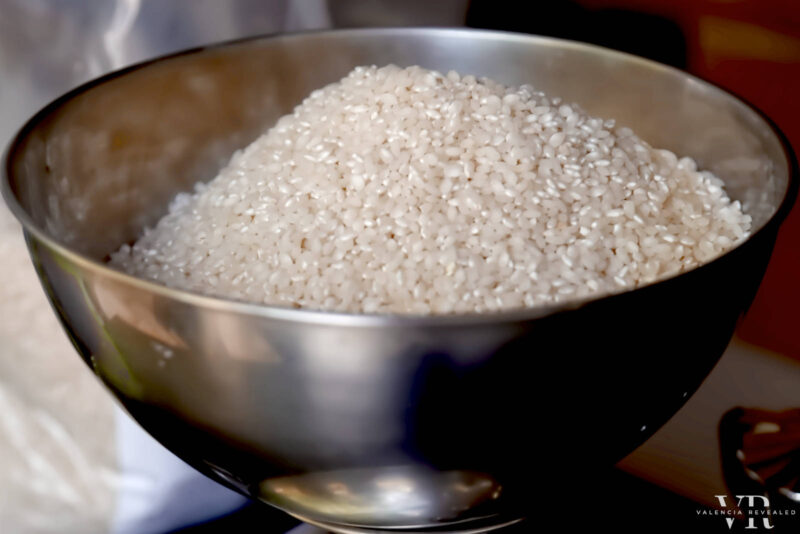
It sounds funny saying it so further in the article. But paella is a rice dish. Not a seafood dish, nor a meat dish. I’m only stressing this because I’ve heard it over and over again “there was barely any meat in our paella, we have been duped“. But that’s simply not true. Paella is a rice dish first and foremost. All the other ingredients – meat, seafood, and vegetables – have a secondary role.
17. Paella is a simple dish invented by simple people
The reason why paella is a rice dish with only a few ingredients is that it was invented by peasants, likely before the Industrial Revolution. They used whatever ingredients they had at hand. And what they had was rice. Rice has been grown in Albufera since the 8th century and was one of the main ingredients used by the peasants. Hence the huge variety of rice dishes in the region.
18. Paella is NOT the national dish of Spain
Paella is often considered the national dish of Spain, but the fact of the matter is that it is not. Surprisingly, Spain doesn’t have an official national dish. And if it did, it would most likely be the humble tortilla de patatas. In the meantime, paella is a saffron rice dish from Valencia. If you travel through Spain, you will encounter many paella variations that stray from the original recipe and are frowned upon by Valencianos.
19. A good paella is made to order
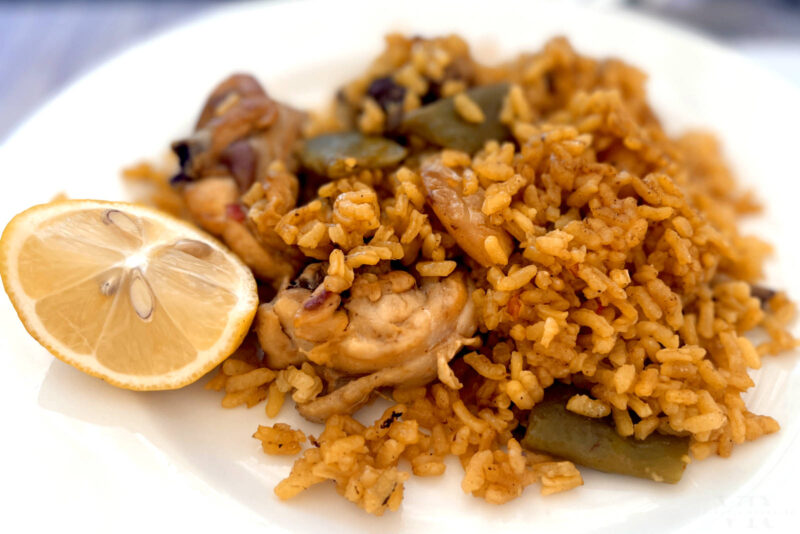
Yes, you can order ready-made paella for one in markets, takeaway restaurants, and as part of the lunch meal deal even in Valencia. But these are not authentic paellas. The rice layer is way too thick and there’s no socarrat. So an interesting fact to take into account is that a good, authentic paella is always made to order. It might take 40 to 50 minutes to prepare, but the difference between the two is night and day. So worth the wait!
20. Paella is always prepared for an even number of people
When you order paella at a restaurant, you’ll immediately be informed that they only prepare paella for two. Or four. Or six. Basically, paella is always prepared for an even number of people. This isn’t your waiter being difficult, it’s due to the size of the paella pans. And no, they won’t just add more rice for a third person to a pan for 2 people because that would spoil the taste of the paella and the restaurant has a reputation to uphold.
21. Paella is a dry rice dish
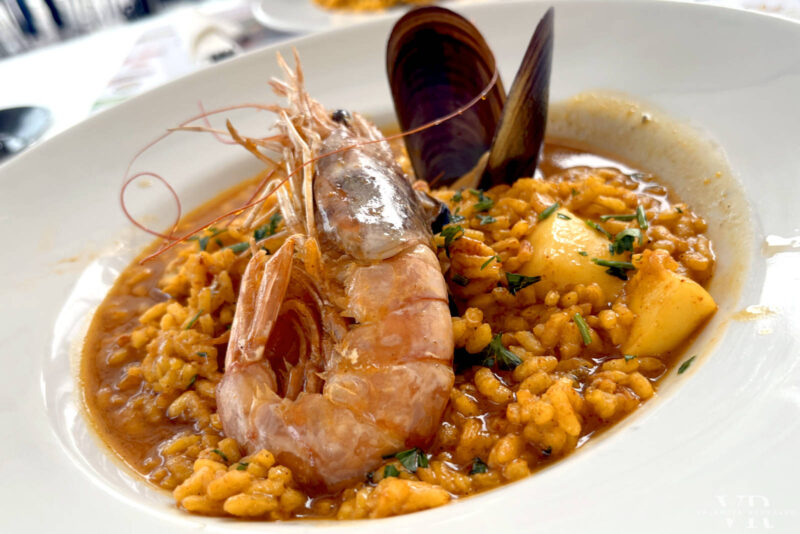
Another interesting fact about paella is that it’s a dry rice dish. This means that by the time the paella is served, the rice should be perfectly cooked without forming lumps and there should be no broth in sight. There are other traditional Valencian dishes made with rice that are less dry, however. These are called arroz caldoso (bothy rice) and arroz meloso (with an intermediate cooking point).
22. There is a similar dish made with fine noodles
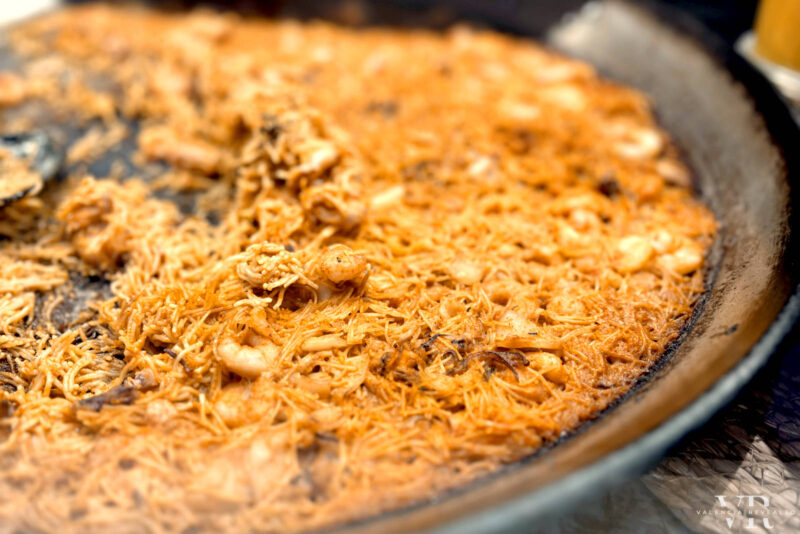
Fideuà is a fine noodle dish similar to paella, in that it is cooked in a paella pan, usually with fish and seafood. This dish dates back to the 1930s when it was created aboard a fishing boat by a resourceful cook who ran out of rice. The captain, who was a big fan of rice, was pleasantly surprised when the cook substituted thin noodles for the rice, and the result was a hit.
23. Paella has its own emoji 🥘
Have you ever noticed the paella emoji on your phone? Valencianos surely did and they were not happy about it. When the first paella emoji was created in 2016, it featured all the wrong ingredients. Eventually, the emoji was redesigned and it now has chicken, green bean, and garrofón, just like the authentic paella Valenciana. This emoji also made history for being the first emoji of a Spanish dish.
24. The largest paella ever made fed 110.000 people
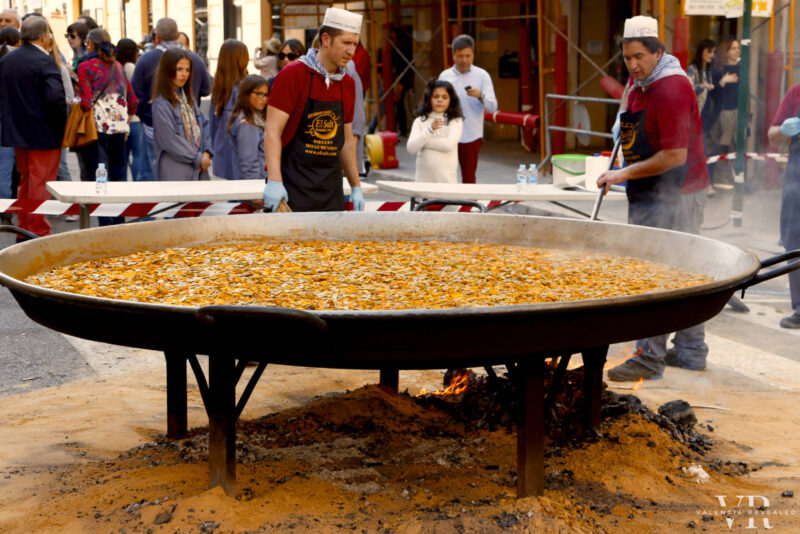
Another fun fact about paella is that it can be scaled to feed up to 110.000 people. That’s right, the largest paella ever was prepared in 2001 by Valencian chef Antonio Galbis in Madrid and it entered the Guinness World Records. With a diameter of 21 meters (69 feet), it’s unlikely that it had any socarrat to speak of, but it did use all the right ingredients, including 6.000 kg (13.227 lbs) of rice and 12.500 kg (27.557 lbs) of meat.
25. There’s a World Paella Day
That’s right, paella is that famous. Every year, on September 20th, people all around the globe celebrate World Paella Day. But that’s not all. In the US, March 27th marks National Spanish Paella Day. As if we needed more reasons to eat paella!
26. Paella is pronounced “pah-EH-yah“
Another fun fact about paella is that it’s pronounced “pah-EH-yah“, not “pie-EL-uh” nor “pai-EH-luh“. The emphasis is on the second syllable and the “ll” is pronounced as a “y”. An incredible number of people butcher the name of this dish, in spite of its popularity. If only I had €1 for every time someone mispronounced “paella”…
27. Paella might receive UNESCO Intangible Heritage status
In 2021, the local government of Valencia declared paella an Asset of Intangible Cultural Interest. This is just the first step of a broader process which could lead to paella being eventually recognized as a UNESCO Intangible Cultural Heritage, similarly to Napolitan pizza, Belgian beer and couscous. There’s also a push to secure additional protection at the EU level, aiming to prevent the misuse of the paella name in a manner that might lead to consumer confusion.
Paella facts final thoughts
There you go, 25 fun facts about paella, the delectable dry rice dish that is arguably the most popular rice dish in the world. If you want to learn more about Valencian cuisine, check out what to eat at Las Fallas Festival every March.


